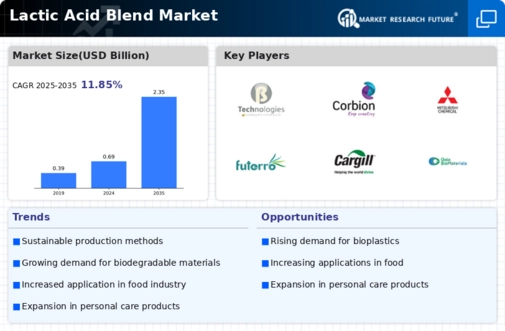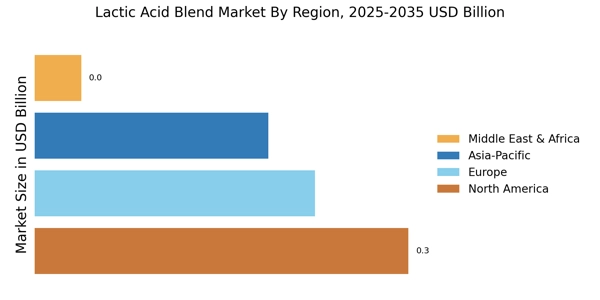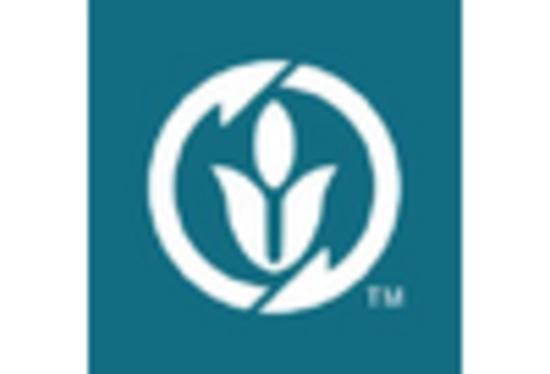Growing Awareness of Health Benefits
The Lactic Acid Blend Market is experiencing growth driven by the increasing awareness of health benefits associated with lactic acid. As consumers become more health-conscious, the demand for products containing lactic acid blends is rising. These blends are recognized for their potential probiotic properties and their role in promoting gut health. The dietary supplements market is expanding, with lactic acid blends being incorporated into various health products. This trend suggests that the lactic acid blend market may continue to thrive as consumers seek out functional foods and supplements that align with their health goals.
Expansion in Food and Beverage Sector
The Lactic Acid Blend Market is witnessing substantial growth due to its expanding applications in the food and beverage sector. Lactic acid blends are utilized as preservatives, flavor enhancers, and pH regulators, contributing to product stability and safety. The food industry is increasingly adopting lactic acid blends to meet consumer demands for clean-label products. Recent statistics indicate that the food additives market is on an upward trajectory, with lactic acid blends being a key component. This growth in the food sector is expected to bolster the lactic acid blend market, as manufacturers recognize the benefits of incorporating these blends into their formulations.
Regulatory Support for Biobased Products
The Lactic Acid Blend Market is positively influenced by regulatory support for biobased products. Governments are increasingly implementing policies that promote the use of renewable resources and sustainable practices. This regulatory environment encourages manufacturers to invest in lactic acid blends, which are derived from natural sources. Recent initiatives aimed at reducing carbon footprints and promoting sustainable manufacturing processes are likely to enhance the market's growth prospects. As regulations become more favorable, the lactic acid blend market may see an influx of new opportunities, driving innovation and expanding its reach across various industries.
Rising Demand for Biodegradable Products
The Lactic Acid Blend Market is experiencing a notable increase in demand for biodegradable products. As consumers become more environmentally conscious, the shift towards sustainable materials is evident. Lactic acid blends, derived from renewable resources, are increasingly favored in various applications, including packaging and textiles. According to recent data, the biodegradable plastics market is projected to grow significantly, with lactic acid blends playing a crucial role in this expansion. This trend is likely to drive innovation and investment in the lactic acid blend sector, as manufacturers seek to meet the evolving preferences of eco-conscious consumers.
Increased Investment in Research and Development
The Lactic Acid Blend Market is benefiting from increased investment in research and development. Companies are focusing on enhancing the properties of lactic acid blends to cater to diverse industrial applications. This investment is likely to lead to the development of innovative products that meet specific consumer needs. Furthermore, advancements in production technologies are expected to improve the efficiency and cost-effectiveness of lactic acid blend manufacturing. As a result, the market may witness a surge in new entrants and product offerings, fostering competition and driving growth within the lactic acid blend sector.


















Leave a Comment